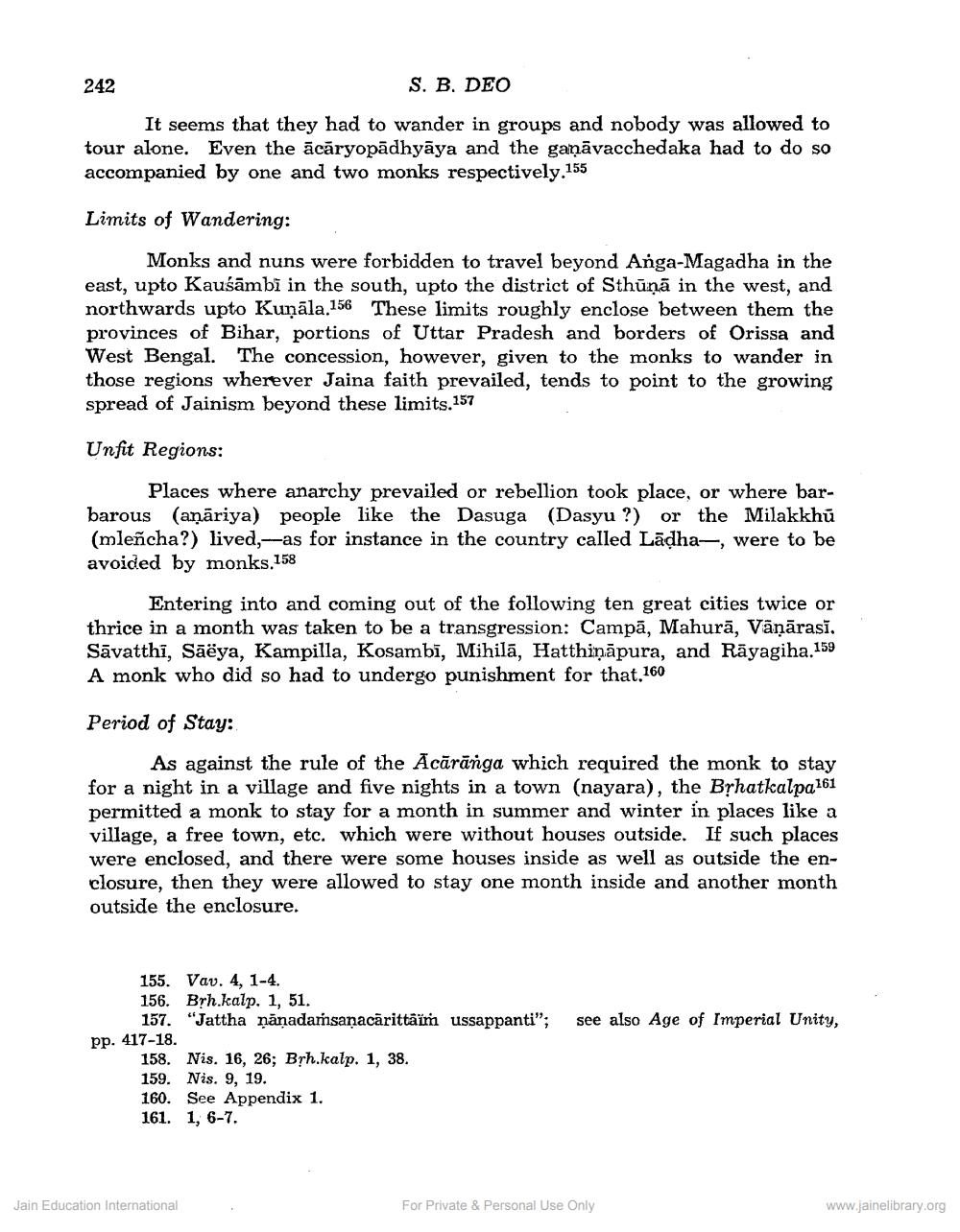________________
242
S. B. DEO
It seems that they had to wander in groups and nobody was allowed to tour alone. Even the ācāryopādhyāya and the gaņāvacchedaka had to do so accompanied by one and two monks respectively.155
Limits of Wandering:
Monks and nuns were forbidden to travel beyond Anga-Magadha in the east, upto Kaušāmbi in the south, upto the district of Sthūņā in the west, and northwards upto Kuņāla.156 These limits roughly enclose between them the provinces of Bihar, portions of Uttar Pradesh and borders of Orissa and West Bengal. The concession, however, given to the monks to wander in those regions wherever Jaina faith prevailed, tends to point to the growing spread of Jainism beyond these limits.157
Unfit Regions:
Places where anarchy prevailed or rebellion took place, or where barbarous (anāriya) people like the Dasuga (Dasyu ?) or the Milakkhú (mleñcha?) lived,-as for instance in the country called Lādha-, were to be avoided by monks. 158
Entering into and coming out of the following ten great cities twice or thrice in a month was taken to be a transgression: Campā, Mahurā, Vāņārasī, Sāvatthi, Sāëya, Kampilla, Kosambī, Mihilā, Hatthiņāpura, and Rāyagiha.159 A monk who did so had to undergo punishment for that.160
Period of Stay:
As against the rule of the Acārānga which required the monk to stay for a night in a village and five nights in a town (nayara), the Brhatkalpa161 permitted a monk to stay for a month in summer and winter in places like a village, a free town, etc. which were without houses outside. If such places were enclosed, and there were some houses inside as well as outside the enclosure, then they were allowed to stay one month inside and another month outside the enclosure.
ussappanti";
see also Age of Imperial Unity,
155. Vav. 4, 1-4. 156. Brh.kalp, 1, 51.
157. "Jattha nănadamsanacārittäin pp. 417-18.
158. Nis. 16, 26; Brh.kalp. 1, 38. 159. Nis. 9, 19. 160. See Appendix 1. 161. 1, 6-7.
Jain Education International
For Private & Personal Use Only
www.jainelibrary.org




